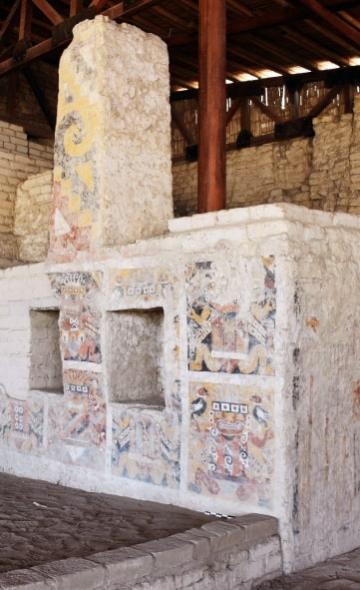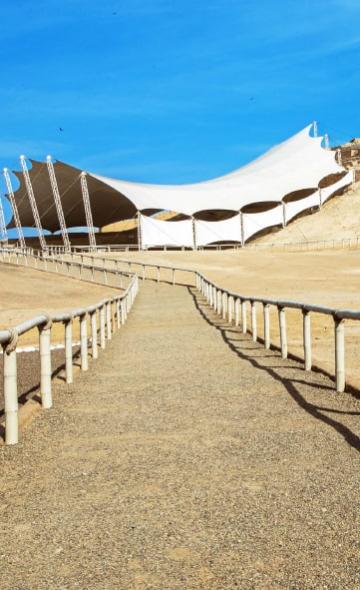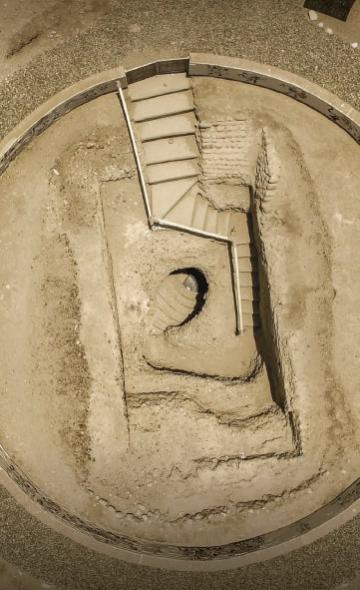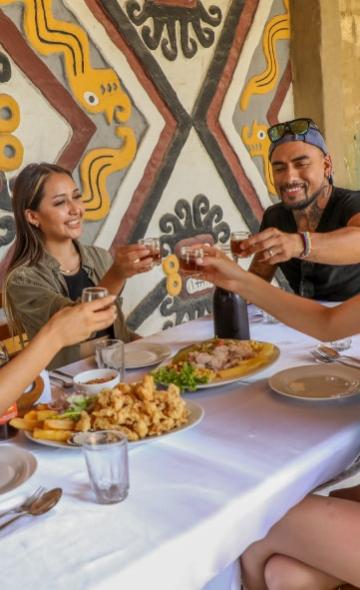- Visitors
- Researchers
- Students
- Community
- Information for the tourist
- Hours and fees
- How to get?
- Virtual tours
- Classic route
- Mystical route
- Specialized route
- Site museum
- Know the town
- Cultural Spaces
- Cao Museum
- Huaca Cao Viejo
- Huaca Prieta
- Huaca Cortada
- Ceremonial Well
- Walls
- Play at home
- Puzzle
- Trivia
- Memorize
- Crosswords
- Alphabet soup
- Crafts
- Pac-Man Moche
- Workshops and Inventory
- Micro-workshops
- Collections inventory
- News
- Visitors
- Discovering the Mochica edifices on the north coast of Peru
News
CategoriesSelect the category you want to see:
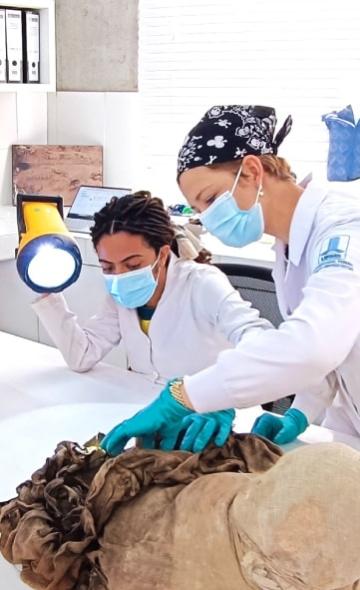
International academic cooperation between the Wiese Foundation and Universidad Federal de Mato Grosso do Sul ...
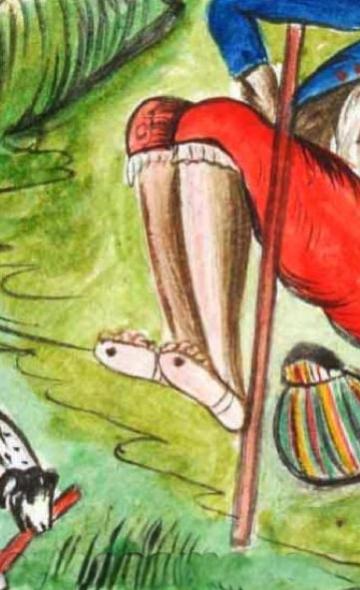
Clothing at El Brujo: footwear ...
To receive new news.
Por: Complejo Arqueológico El Brujo
The Mochica society, known for its extraordinary skill in pottery, metallurgy, and architecture, left an impressive legacy on Peru's northern coast. This heritage is manifested in its magnificent edifices, which to this day arouse the amazement of historians and tourists. Below, we'll explore some of the most outstanding Mochica constructions that you can find in this region.
El Brujo Archaeological Complex: A Mirror of Mochica Power
Located in the region of La Libertad, the El Brujo Archaeological Complex stands as a monumental testimony of the Mochica culture. This complex is comprised of three large huacas: Huaca Prieta, Huaca Cao Viejo and Huaca Cortada, each with its own history and particularity.
Huaca Cao Viejo is especially notable for housing the tomb of the Lady of Cao, a figure who has expanded the studies on Mochica society. The murals and reliefs of this huaca are a living testimony of the religious practices and social structure of the Mochica. The details of these murals that you can explore at El Brujo reveal fascinating aspects of their worldview.
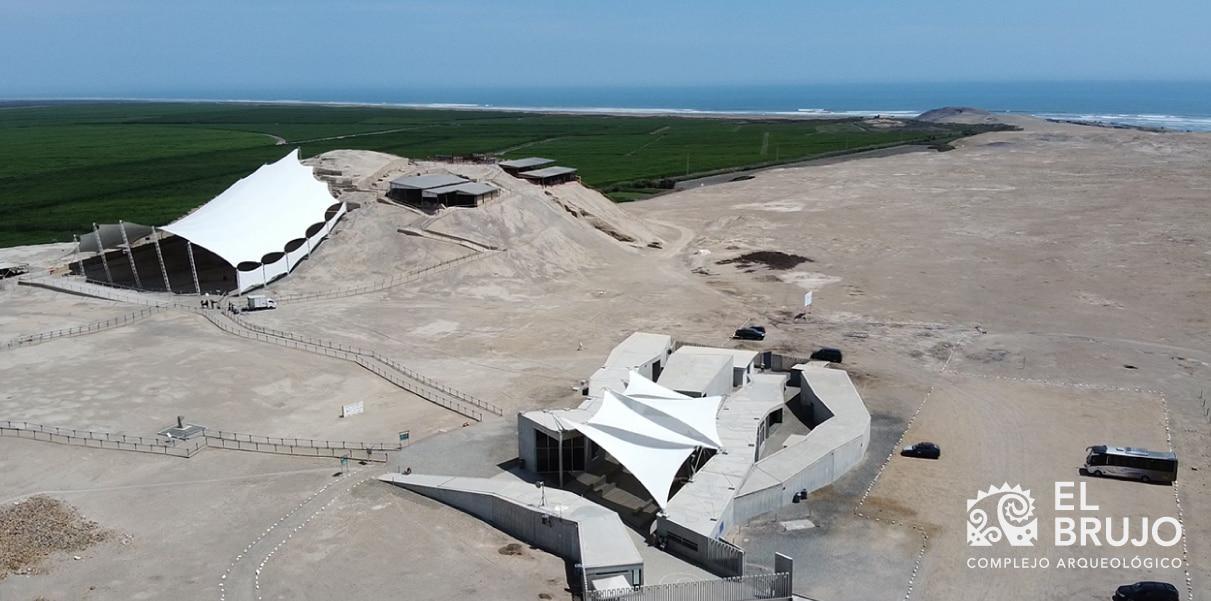
The El Brujo Archaeological Complex, in particular, is a must-see site. As you explore this place, you'll immerse yourself in the history of the Mochica people and much more. Each structure in El Brujo tells a different story, from everyday life to religious rituals and burial practices.
Huaca del Sol and Huaca de la Luna: Pillars of Mochica Culture
Both are edifices built by the Mochica society, located 8 kilometers away from the city of Trujillo, at the foot of the so-called Cerro Blanco.
Huaca del Sol is a work for whose construction more than 143 million adobes were used, while in Huaca de La Luna, 50 million were used. Regarding the adobes used, they are known to have the so-called "manufacturers' marks", through which the brand of the community or family that produced them can be identified.
Although both huacas are important vestiges of the Mochica culture, few studies have been conducted on them; especially on Huaca del Sol.
Some initial research carried out in 1980 on these huacas led to the assumption that there was a single Mochica state whose capital was located in Huaca del Sol and Huaca de la Luna. This proposal was first put forward by Larco Hoyle and enjoyed great popularity among researchers for four decades.
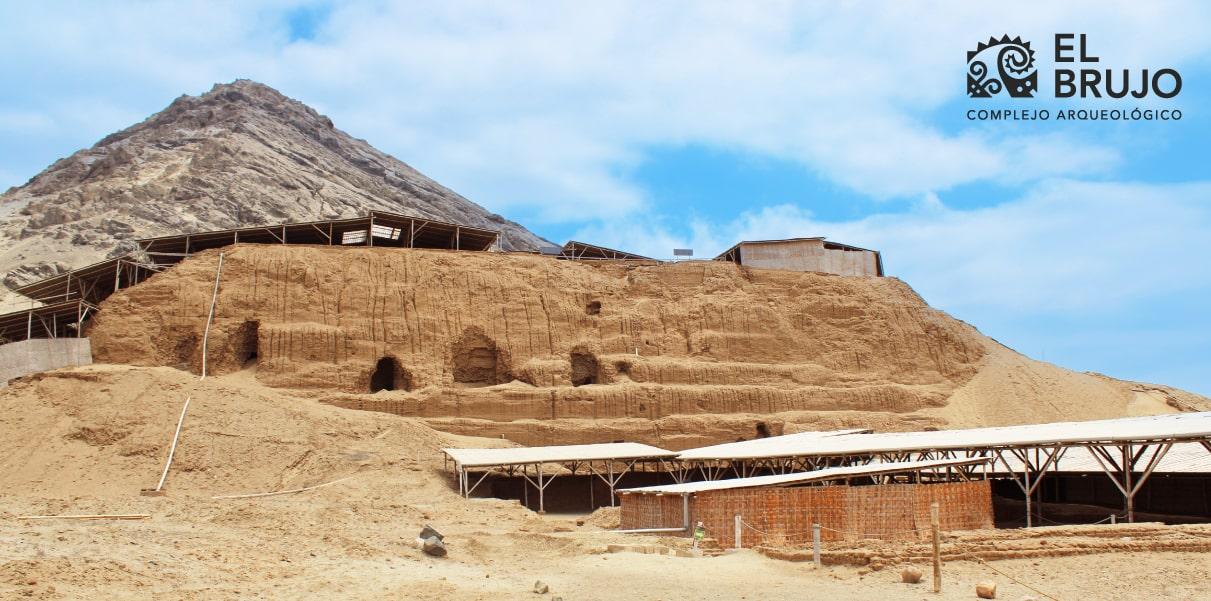
However, later studies revealed that the distribution of the Mochica was wider than believed at that time and that, in reality, it comprised a territory of about 14 valleys and that, in addition, their distribution was neither homogeneous nor continuous.
The human remains found allow us to learn about the ritual practices of the ancient Mochica society. In fact, some features of the bodies, such as the absence of jaws or arms, seem to indicate that they were captured enemies. Moreover, the remains of children have also been revealed in Huaca de la Luna, that would show that their sacrifices would have been made to placate the torrential rains that used to hit the area.
As for the daily life of those who inhabited these huacas, research has allowed scholars to discover an interesting fact about Mochica agriculture. The population dedicated to this economic activity did not live in urban areas, but, rather, in villages distributed around the cultivation areas. It has also been pointed out that the internal organization of these groups was based on kinship ties.
The importance of the Mochica edifices
These edifices are not only examples of the constructive skill of the Mochica, but are also windows into their spiritual and everyday world. Complexes such as El Brujo and Huaca del Sol and Huaca de la Luna offer us an in-depth insight into the ritual practices, social organization, and daily life of this fascinating culture.
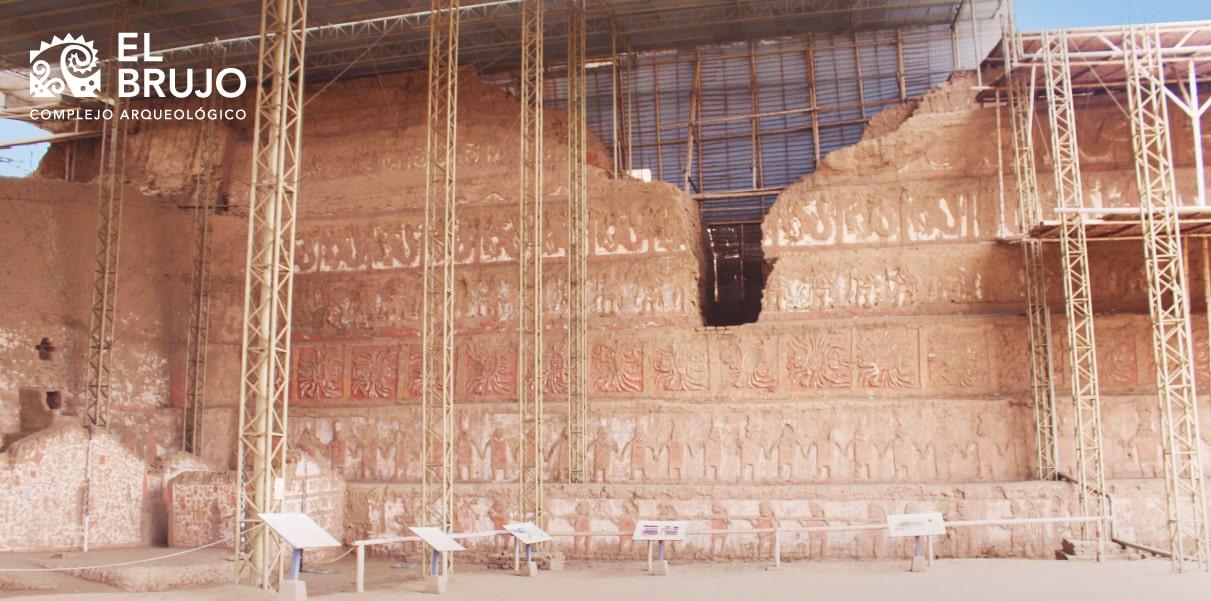
A legacy that endures
The Mochica edifices on Peru's northern coast are more than just ruins: they are time capsules that allow us to understand a culture that, although it has disappeared, still has much to teach us. To visit these sites is to take a trip to the heart of Peru's pre-Hispanic history, an experience that enriches our understanding of the past and inspires us to value the cultural richness of this region.
We invite you to explore the El Brujo Archaeological Complex and discover for yourself part of the legacy of the Mochica. Whether you're interested in the history, architecture, or just want to experience the majesty of these ancient constructions, Peru's northern coast awaits you with its historical treasures.
You can also read:
• Pre-Columbian ancestral culture and art in Peru
• Historical Tourism in El Brujo: A Journey into Peru's Past
Visitors , outstanding news


